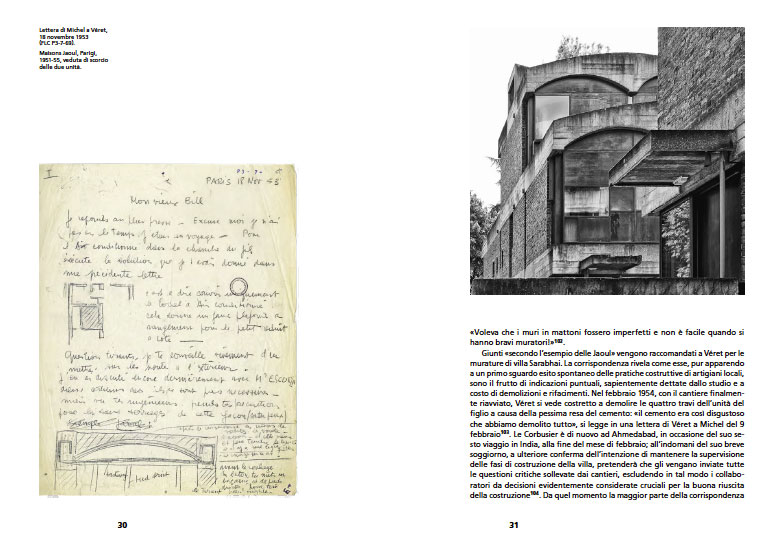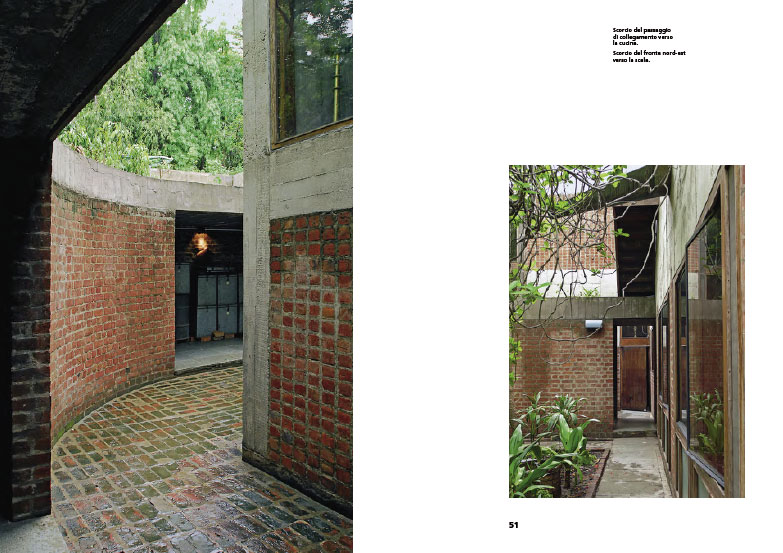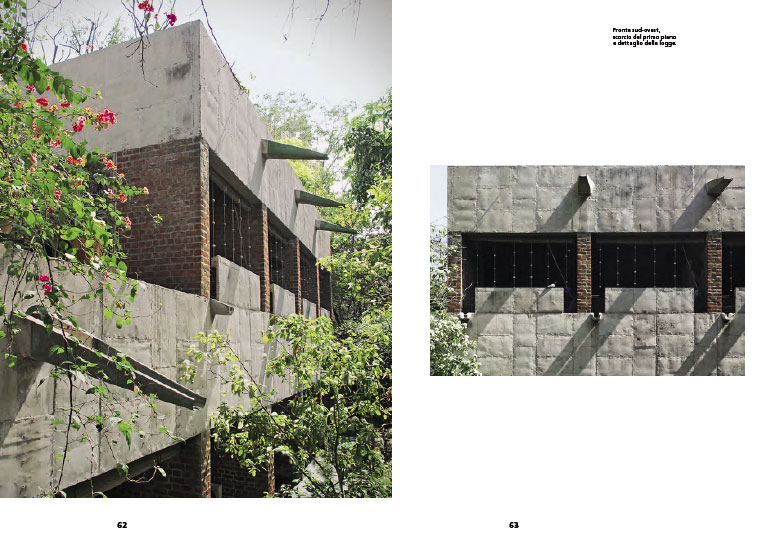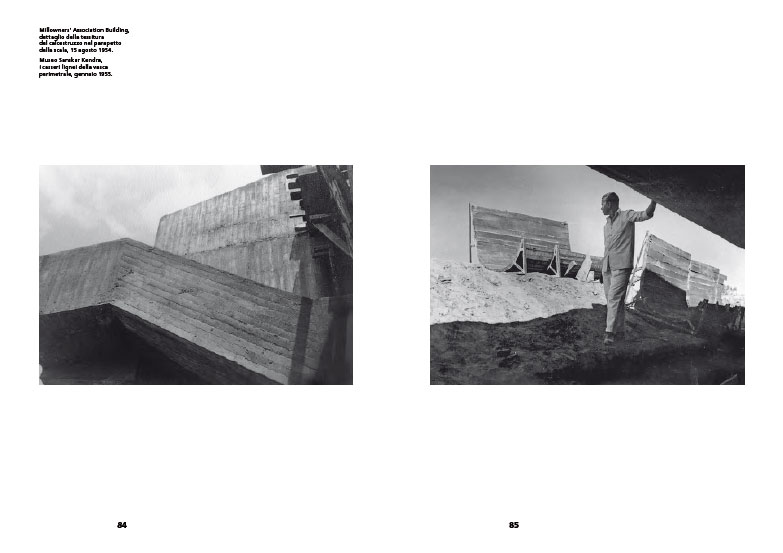The subject of the volume, which includes an essay by Alessandra Rampazzo, is Villa Sarabhai, built by Le Corbusier in Ahmedabad, India, between 1951 and 1956 for Manorama Sarabhai, a member of one of the most refined and powerful Indian entrepreneurial families.
Against the backdrop of an India that had recently emerged from British rule, the house designed for Manorama Sarabhai – one of the most enigmatic and least known of Le Corbusier’s works – presents the type of the Mediterranean villa developed by Le Corbusier during the 1940s. This model, under the guidance of a demanding client, was open to a multiplicity of influences, which had their specific reasons in the traditional ways of life and the local cultural landscape.
Built in the shadow of Le Corbusier’s most striking achievement in the same years at Chandigarh – the newly founded city in the Punjab – the villa is the result of a complex design and construction process that developed under the careful control of the Parisian office through the contribution of trusted collaborators, including a very young Balkrishna Doshi (a future protagonist of Indian contemporary architecture) and Jean Louis Véret. The latter took the photographs of the construction work on Le Corbusier’s various buildings in Ahmedabad, presented for the first time in this volume in comparison with images of the villa’s current state.
€ 25,00
- Format
- 17 x 24
- Binding
- paperback with flaps
- Pages
- 120
- Year of publication
- 2021
- ISBN
- 9788892820944
- Language
- Italian
- Genre
- Architecture
- Publisher
- Electa



